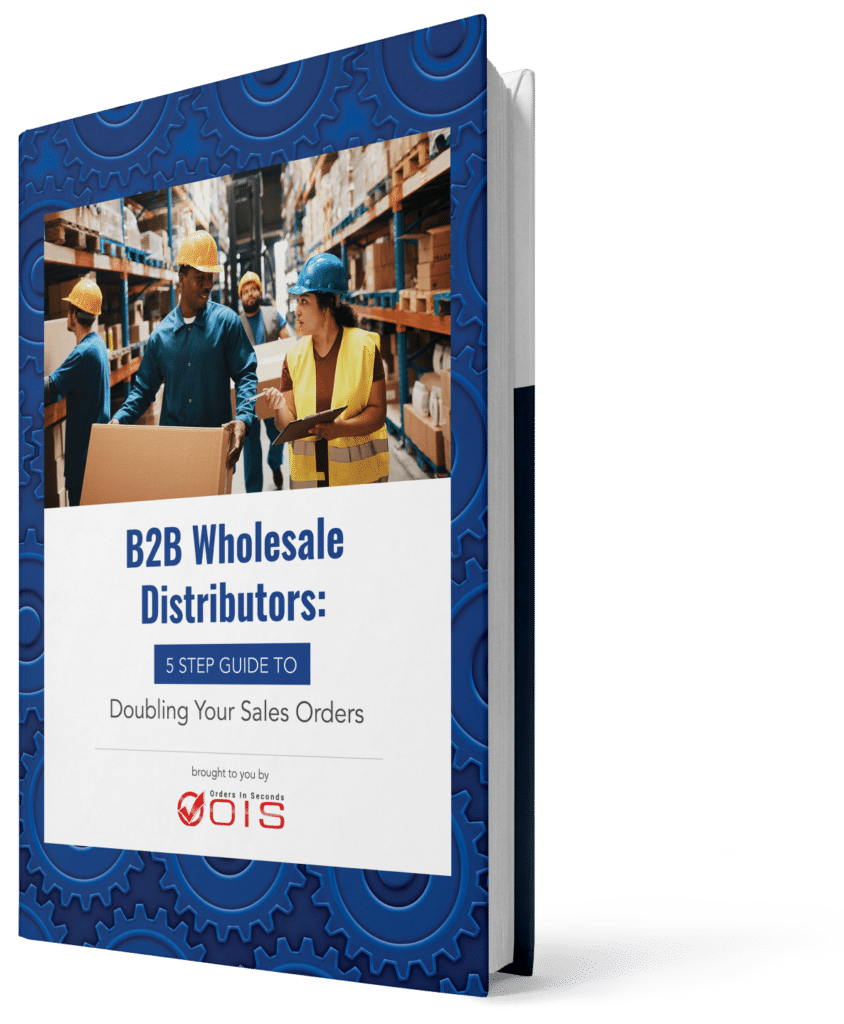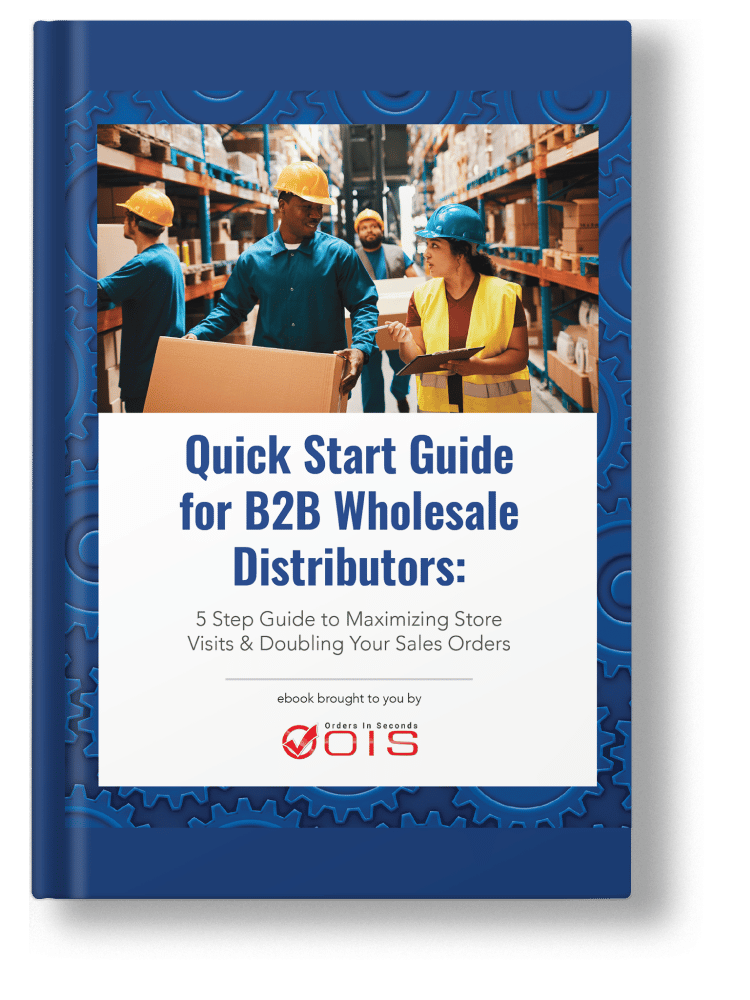In the quest to enhance sales operations, you may be facing the SFA vs CRM decision. Sales Force Automation (SFA) optimizes your sales process through automation, while Customer Relationship Management (CRM) focuses on nurturing rewarding customer relationships. Our exploration here details their distinctions to inform your choice, equipping you with the knowledge to elevate your sales system.
3 Key SFA vs CRM Differences
- Sales Force Automation (SFA) optimizes sales force productivity by automating routine tasks and tracking sales activities, while Customer Relationship Management (CRM) focuses on managing long-term customer relations and improving customer satisfaction.
- SFA and CRM systems share common features such as contact and pipeline management, task automation, and data analysis and reporting, but differ in their core functions with SFA enhancing sales processes and CRM concentrating on customer retention and service.
- While SFA and CRM systems can improve sales productivity, customer experience, and facilitate informed decision-making, their implementation may present challenges including high costs, complexity, resistance from sales teams, and data security concerns.
Table of Contents
- Understanding SFA and CRM
- Comparing SFA and CRM: Key Features
- Advantages of Using SFA and CRM
- Potential Challenges with SFA and CRM Implementation
- Making the Right Choice: SFA or CRM?
- Real-Life Examples of SFA and CRM in Action
- Summary
- Frequently Asked Questions
- Transforming Wholesale Operations with Orders in Seconds
Understanding SFA and CRM
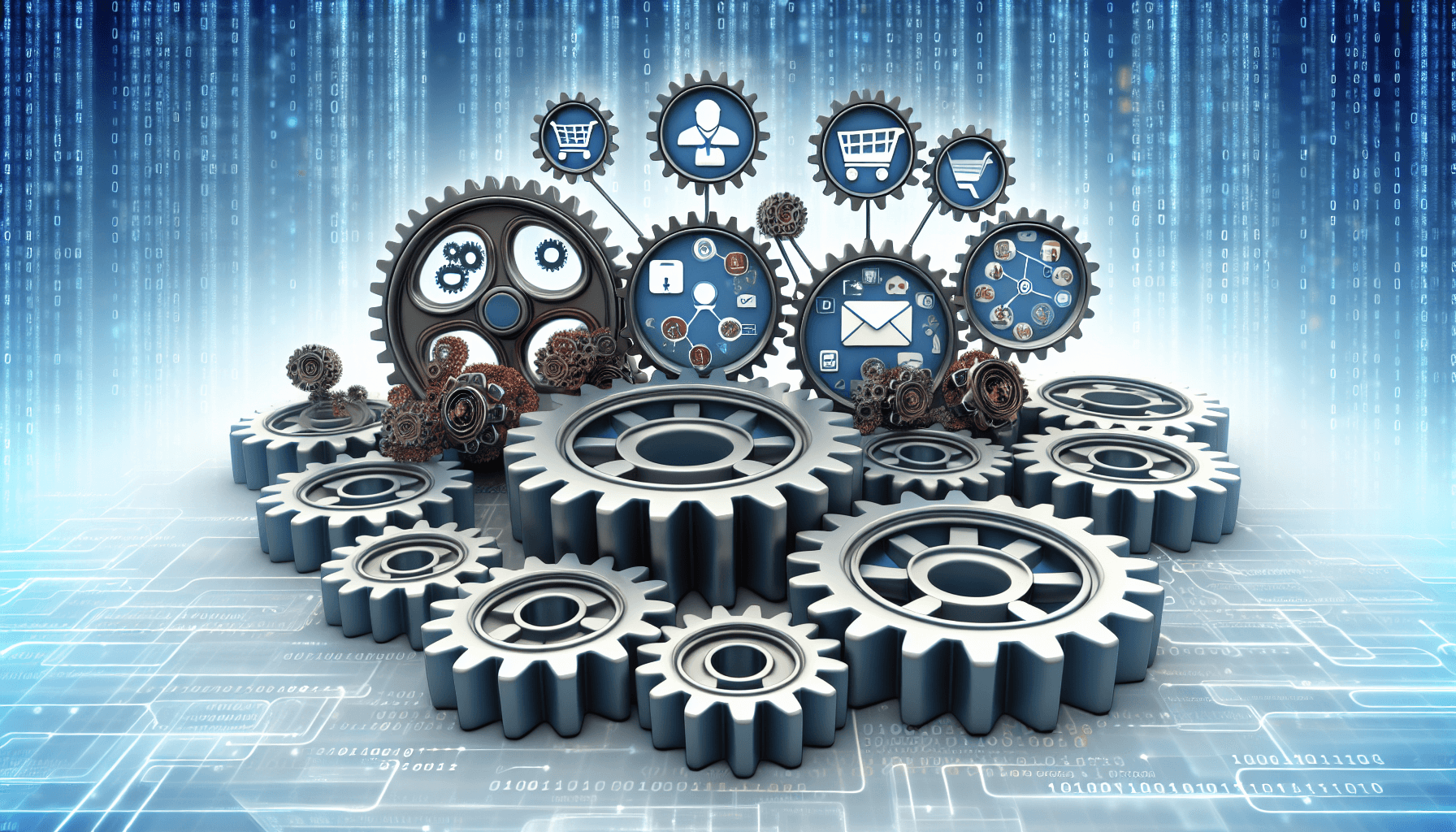
Firstly, comprehending the significance and functionalities of SFA and CRM is crucial. Sales Force Automation (SFA) and Customer Relationship Management (CRM) are both software solutions designed to enhance different aspects of sales and customer management, albeit with varying focal points. SFA primarily zeroes in on enhancing sales force productivity through sales force automation solutions, while CRM concentrates on fostering long-term customer relationships and boosting customer satisfaction. This overlapping sphere of functionalities often results in confusion, since many CRM software may encompass certain facets of Sales Force Automation technology, and vice versa.
Take the case of BeatRoute, an exemplary solution that merges sales automation with customer relationship management in a unified platform, integrating both SFA and CRM. BeatRoute is a testament to how these two systems can come together to form a holistic approach towards sales and customer management.
Sales Force Automation (SFA) Explained
Sales Force Automation (SFA) is a technology solution designed to digitalize sales procedures, to improve the management of the sales force. It achieves this by automating routine sales tasks, boosting efficiency through the monitoring of sales activities and communication. The principal objective of SFA, as a sales force automation software, is to establish a smooth and efficient sales process using sales force automation systems.
SFA stands out for its capability to assist sales teams in refining their processes and tasks. It streamlines contact management, archives information from customer interactions and sales activities, and provides assistance with prompts and notifications. All these features help alleviate sales staff from manual duties, allowing them to concentrate on more critical aspects of their roles.
The principal functions of SFA software encompass:
- Assisting sales representatives in enhancing the effectiveness of sales objectives
- Overseeing sales tasks
- Increasing sales and impacting revenue by optimizing the sales forecasting process
- Assisting the primary role of sales employees in selling
- Providing customization options such as tailored scheduling links for each salesperson
- Offering efficient meeting scheduling capabilities
- Enhancing customer engagement
- Contributing to improved customer relationships.
Customer Relationship Management (CRM) Defined
Conversely, Customer Relationship Management (CRM) serves as an all-encompassing platform that centralizes client data from various interactions, customizes sales solutions based on a client’s needs, and aims to manage the relationship between consumers and businesses effectively. CRM systems are not just about storing customer information or tracking their interactions. They are a powerhouse of features that streamline processes, enhance analysis and tracking capabilities, and offer personalized interactions, all leading to increased customer loyalty. Its significance is particularly notable in industries such as FMCG and CPG.
CRM plays a pivotal role in maintaining enduring customer relationships and securing retention by facilitating personalized customer interactions tailored to their needs and preferences.
Comparing SFA and CRM: Key Features
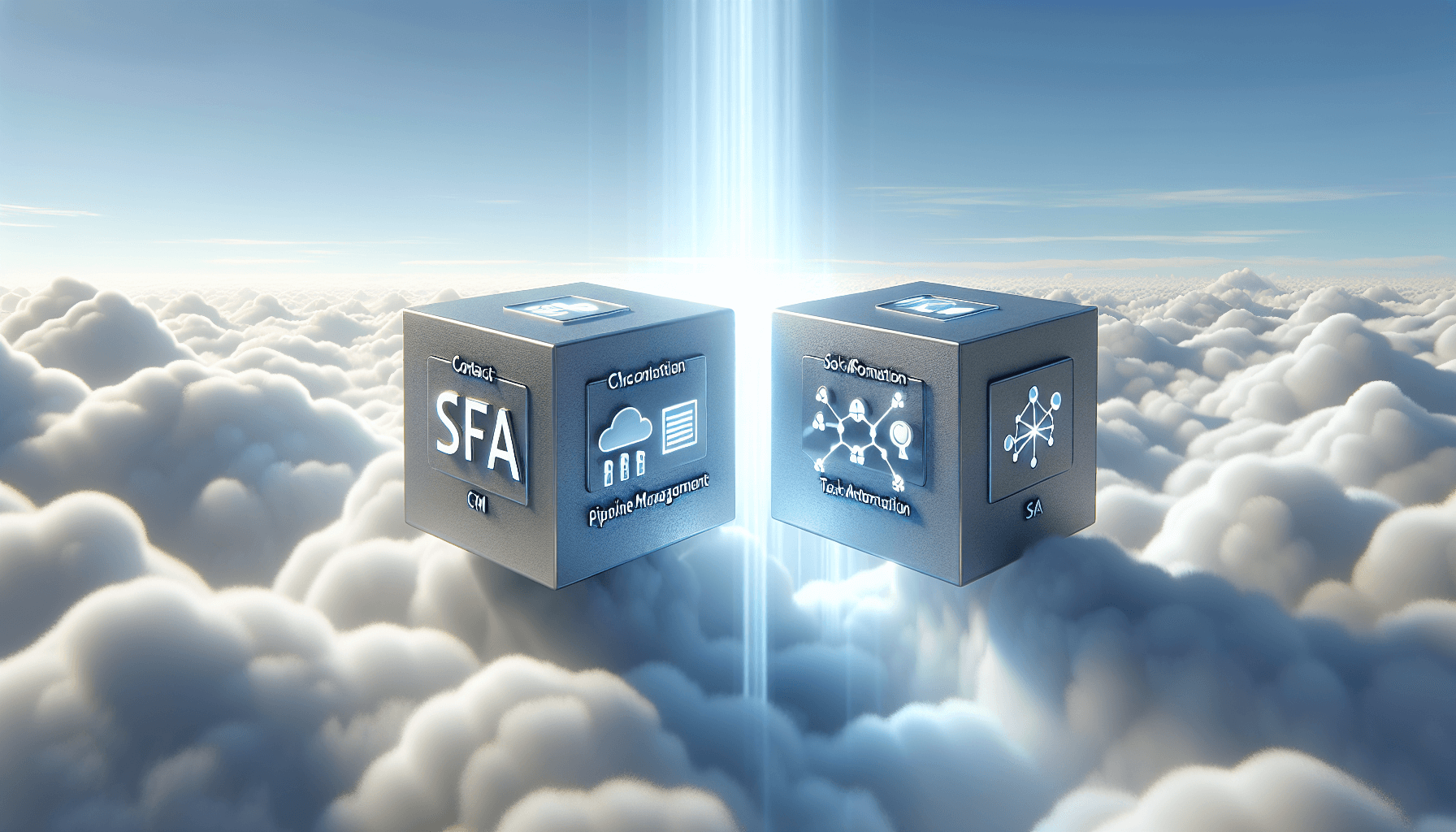
Although SFA and CRM might appear similar, their distinct features distinguish them. However, it’s worth noting that they share some common key features such as contact and pipeline management, task automation, and data analysis and reporting.
Contact and pipeline management in SFA and CRM encompasses:
- The organization and tracking of customer contacts
- The organization and tracking of sales opportunities within a sales pipeline
- Managing relationships with customers
- Tracking interactions with customers
- Monitoring the progression of sales opportunities through various stages
In terms of task automation, SFA and CRM enable the automation of specific tasks such as:
- Uploading and updating customer data
- Tracking emails, meetings, and phone calls
- Automating repetitive tasks and workflows
- Creating follow-up tasks
- Organizing sales team schedules
While both systems provide data analysis and reporting, SFA focuses on analyzing sales behavior, specifically the performance and activities of the sales team. In contrast, CRM is oriented towards analyzing customer behavior to enhance customer relationships and experiences.
Contact and Pipeline Management
Regarding contact and pipeline management, SFA and CRM adopt somewhat distinct strategies. SFA primarily focuses on enhancing the efficiency of the sales team and optimizing the sales process by providing tools for managing leads, accounts, contacts, and opportunities.
On the other hand, CRM is centered around customer retention and satisfaction, utilizing customer information to establish and uphold relationships. Both systems manage:
- Contacts
- Leads
- Accounts
- Opportunities
- Pipelines
- Sales forecasting
- Coordinating tasks
They also track and manage sales opportunities throughout the sales cycle, fostering collaboration within the sales team, and offering a comprehensive overview to facilitate effective sales management.
The advantages of managing contacts and pipelines include:
- Precise sales forecasting
- A comprehensive view of prospects
- Thorough data analysis
- Overall more efficient sales management
Both SFA and CRM play a role in enhancing efficiency, saving time, boosting productivity, and providing a more precise overview of the sales pipeline.
Dive deeper into best practices for maximizing your sales potential by downloading our free eBook below:
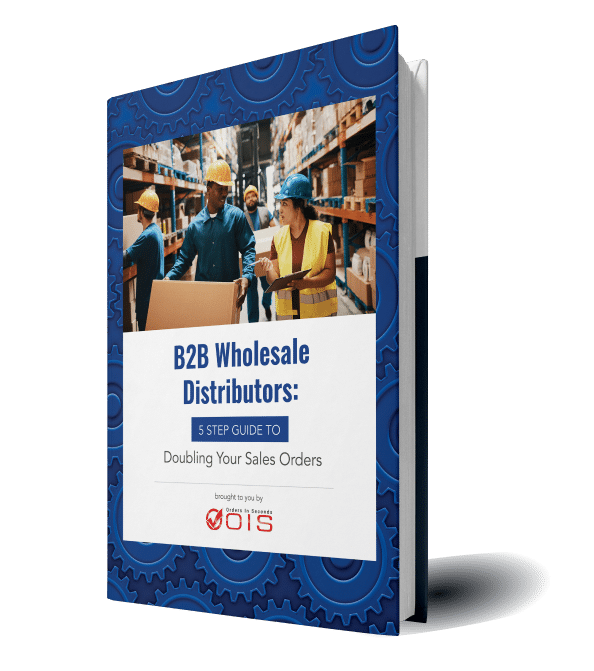
Double Your Sales Orders in 5 Steps
This exclusive eBook is packed with real-world, data-driven concepts that can help maximize your store visits and double your sales. Get it for FREE – Today!
Task Automation
Another shared characteristic of SFA and CRM is task automation, significantly aiding sales teams in conserving time and concentrating on significant tasks. SFA and CRM systems automate various tasks, such as:
- Repetitive tasks
- Inventory management
- Specific sales tasks
- Key steps in the sales process
- Mundane tasks for sales reps
CRM systems specifically target the automation of tasks associated with customer interactions by improving and streamlining customer interactions. This encompasses:
- Automation of repetitive manual tasks
- Optimization of content delivery
- Database management
- Refinement of the sales process
- Integration of data from various sources to enhance productivity.
Both SFA and CRM systems consider data analysis and reporting as fundamental features. They provide valuable insights into sales and customer behavior, which are crucial for tracking performance and making informed decisions. Automated reporting offers time-saving benefits and helps minimize human errors. It enables tracking of past sales trends and interactions, as well as the generation of precise reports using quantitative data.
Various types of reports can be generated from an SFA or CRM system, including:
- Pipeline reports
- Sales performance reports
- Forecasted sales reports
- Lead source analysis reports
- Call reports
- Profitability reports
- Goals reports
The term data analysis in Sales Force Automation refers to the act of scrutinizing and interpreting sales data in order to acquire insights and make well-informed decisions.
While automated reporting saves time and enhances precision, it’s essential to delve deeper into refining your wholesale distribution strategy. Explore our insightful ebook on ‘Avoiding the 5 Mistakes Wholesale Distributors Make’ to ensure a comprehensive understanding of potential pitfalls.
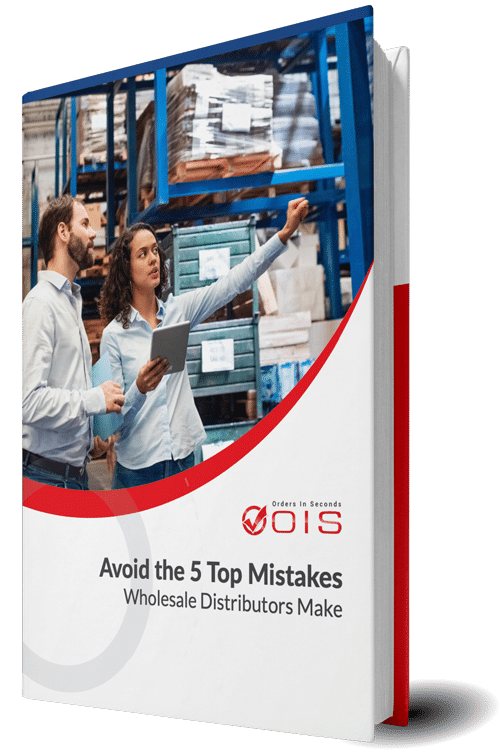
Avoid the Top 5 Mistakes Wholesale Distributors Make
Advantages of Using SFA and CRM

Incorporating SFA and CRM systems into a business yields multiple benefits. From enhancing sales productivity and improving the customer experience to supporting informed decision-making, these systems can transform the way businesses operate.
The attractiveness of these systems lies in their capabilities extending beyond task automation and customer relationship management. They go beyond that, offering a host of benefits that can significantly improve your business’s overall performance. Let’s delve deeper and explore each of these advantages in the following sections.
SFA and CRM, including CRM sales force automation, can significantly improve sales productivity by automating tasks and streamlining processes. This allows sales teams to focus more on selling and less on administrative tasks, resulting in more efficient operations and increased sales.
Sales Force Automation (SFA) contributes to the enhancement of sales productivity by:
- Automating routine tasks
- Optimizing sales procedures
- Enabling sales teams to dedicate more time to effective selling
- Accelerating the closure of deals.
At the same time, CRM improves sales productivity by:
- Optimizing sales processes through precise data analysis
- Monitoring interactions with potential clients
- Automating sales tasks
- Efficiently managing workflows from lead generation to post-sale support
- Leveraging CRM databases for meaningful customer engagement.
Both SFA and CRM contribute to an enhanced customer experience by providing personalized interactions and better customer service. SFA enhances the efficiency of sales teams through the automation of routine tasks like lead and contact management, enabling a more strategic and customer-centric approach.
On the other hand, CRM improves customer service by:
- offering deeper insights into customer needs
- personalized communications
- quicker response times
- fostering better collaboration among teams
When combined, they guarantee an elevated standard of customer service and satisfaction.
SFA and CRM enable informed decision making through data analysis, reporting, and insights. They facilitate the collection, analysis, and utilization of customer data to enhance sales strategies, pinpoint obstacles, and make data-driven decisions to achieve optimal efficiency. These systems collect data including:
- Sales patterns
- Customer interactions
- Contact details
- Customer preferences
- Customer behavior
They convert this data into actionable insights by analyzing data to identify patterns and trends, and providing AI-powered insights and recommendations for sales and marketing strategies.
Thus, goal assessment features linked to sales reports, repositories of valuable customer information, potential sales management and pipeline management features, gathering and analysis of customer data, effective opportunity management, and capabilities for resource allocation and territory management are all characteristics of SFA and CRM that support informed decision making.
Potential Challenges with SFA and CRM Implementation

Even with their multitude of advantages, the implementation of SFA and CRM can introduce unique challenges. These can range from high costs and complexity, resistance from sales teams, to data security and privacy concerns.
It’s important for businesses to be aware of these potential hurdles before embarking on the journey of implementing these systems. By understanding these challenges, you can prepare for them and put measures in place to mitigate their impact, ensuring a smooth and successful implementation.
One of the primary challenges of implementing SFA and CRM systems is the high costs and complexity associated with them. The customary expenses linked to the implementation of these systems can be substantial, with costs ranging from $10,000 to $20,000 for a team of approximately 10 users, with an estimated budget of around $7,500 per user.
These elevated expenses stem from factors such as:
- inadequate planning and ambiguous objectives
- the necessity for substantial business transformation
- customization needs
- security concerns
- marketing objectives
- the overall complexity of the system
As such, the high costs and complexities associated with implementing SFA and CRM systems necessitate significant investment and thorough training for successful adoption and utilization by businesses.
Another challenge that businesses often face when implementing SFA and CRM systems is resistance from sales teams. This resistance can often stem from:
- Lack of commitment from management
- Apprehensions about being monitored
- Misunderstandings about the needs of the users
- Lack of support from sales leaders
- Belief that these systems will add to their workload through time-consuming data entry.
Mitigating this perceived loss of control can be achieved by:
- Prioritizing the salesperson’s experience in the system’s design, ensuring it is user-friendly and customized to their requirements
- Providing comprehensive training and transparent communication about the system’s objectives
- Involving the sales team in the integration process
- Establishing achievable expectations
- Delivering continuous support
These actions are crucial to empower the sales team, improve their sales team performance, and alleviate their apprehensions.
Data security and privacy concerns are crucial when implementing SFA and CRM systems. The management of sensitive customer data within these systems can give rise to privacy and security concerns if adequate measures for protection are not in place, potentially resulting in data breaches and legal consequences for the company.
In order to prevent such issues, SFA and CRM systems generally incorporate standard security measures including:
- Cloud-based infrastructure
- Built-in malware protection
- Data encryption
- Authorized IP addresses
- Two-step authentication
Furthermore, the regulations pertaining to the storage and utilization of customer data in CRM systems, including the General Data Protection Regulation (GDPR) and various government mandates, are designed to safeguard customers’ privacy rights, empower them with control over their personal data, and ensure adherence to legal and regulatory obligations.
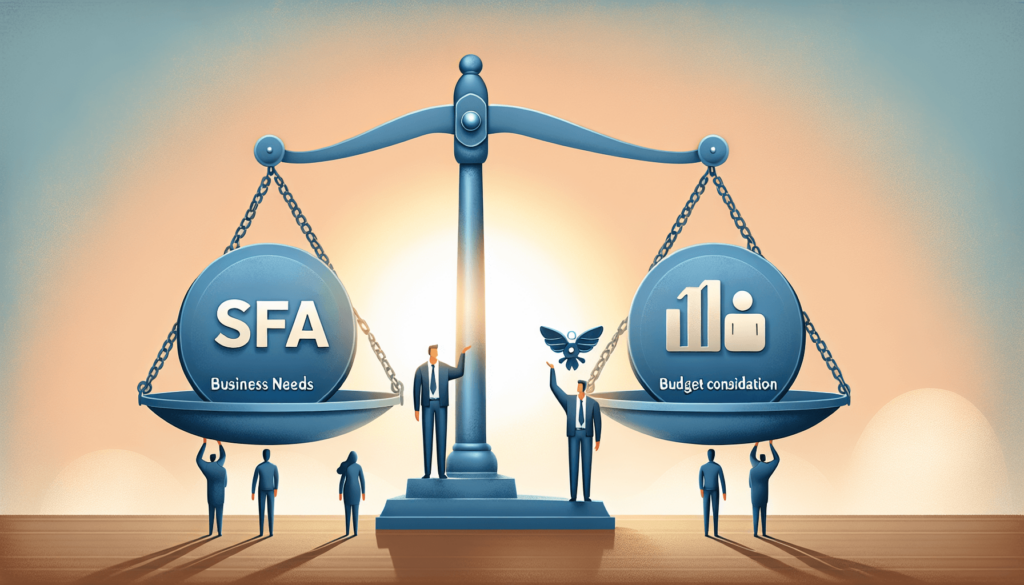
Deciding between SFA and CRM can be a formidable task at times. However, the decision can be simplified by assessing business needs, considering budget and resources, and seeking input from sales teams.
Remember, the decision between SFA and CRM is influenced by the unique needs of a business, as it determines which solution best aligns with the specific requirements and objectives of the business. Therefore, it’s crucial to take into account the specific needs and objectives of the business when making this decision.
It’s critical to evaluate your business needs before deciding between SFA and CRM. A business can assess its need for Sales Force Automation (SFA) by evaluating its desire to:
- Enhance sales efficiency
- Improve customer engagement
- Simplify sales representative management
- Execute successful marketing strategies
- Streamline time-consuming tasks to allocate the sales team’s time to more valuable activities.
Indicators that suggest a business may require a CRM system include:
- Encountering challenges with report creation
- A lack of visibility over team activities
- Loss of important customer data
- Difficulties in enhancing customer relationships
- A need to centralize data and streamline reporting
- A desire to scale and grow the business
When choosing between SFA and CRM, it’s also important to consider budget and resources. The typical cost of implementing an SFA system can vary from $5,000 to upwards of $150,000, contingent upon the intricacy and extent of the project, whereas the implementation costs for CRM systems can range from $10,000 to $20,000 or higher.
It’s also essential to consider the resources required for the effective implementation and management of an SFA system. These resources include:
- Sales automation tools
- Customer management software
- Marketing automation tools
- Reporting and analytics
- Training and support
- Controlled implementation strategy
Finally, it can be extremely beneficial to solicit input from your sales teams when making this decision. After all, they are the ones who will be using these systems on a daily basis. Their insights can offer valuable information regarding their specific requirements, processes, and difficulties, which can aid in choosing the most suitable solution to meet their needs and enhance their efficiency.
Practical strategies for engaging sales teams in the decision-making process include:
- Gathering their input through surveys, interviews, or focus groups
- Involving them in system demonstrations and trials
- Ensuring that their needs and preferences are taken into account throughout the evaluation and selection process.
To provide further insight into the advantages and challenges of these systems’ implementation, let’s examine some real-world instances of SFA and CRM at work. Successful examples of Sales Force Automation implementation comprise Zendesk Sell, EngageBay, and HubSpot.
As for CRM, case studies showcasing improved customer experience due to CRM implementation include:
- Close, which highlights successful CRM implementation for driving customer satisfaction
- Kylas, offering insights on enhancing customer experience in growing businesses
- Utilities One, where ABC Company observed a 40% increase in customer retention and a 25% improvement in sales conversion following CRM implementation.
In conclusion, both SFA and CRM offer unique benefits and features that can vastly improve sales management and customer relationship management. By understanding the key differences between them, assessing your business needs, considering your budget and resources, and seeking input from your sales teams, you can make an informed decision on which system is right for your business. Remember, the goal is not just to automate tasks or manage customer relationships, but to transform the way your business operates and create a competitive advantage with the best Warehouse Management System.
Frequently Asked Questions
Yes, SFA is often a part of CRM as an additional feature to support client acquisition and integration, making it an all-in-one solution for business needs.
What is the purpose of SFA in CRM?
The purpose of SFA in CRM is to automate sales and sales force management functions, providing automated workflows to streamline the sales process and manage business leads, sales forecasts, and team performance.
How CRM and SFA are different approaches to relationship management?
In essence, Sales Force Automation (SFA) focuses on the sales process and managing prospects, aiming to increase sales, while Customer Relationship Management (CRM) is focused on managing customer relations with existing clients.
What are the potential reasons for the confusion between SFA and CRM software?
The confusion between SFA and CRM software may stem from the fact that CRM software includes some SFA features, and vice versa, leading to overlap in their functionalities. This overlap can cause confusion for users trying to differentiate between the two systems.
What are the financial and organizational obstacles that arise when implementing SFA and CRM systems?
Implementing SFA and CRM systems can incur expenses ranging from $10,000 to $20,000 for a team of 10 users, with an average budget of $7,500 per user. Additionally, challenges may arise from setup, customization, integration with current systems, and scalability.
Transforming Wholesale Operations with Orders in Seconds
In the evolving world of wholesale distribution, SFA and CRM are just the beginning. There are a plethora of options to streamline processes.
Enter Orders in Seconds (OIS), presenting game-changing solutions tailored for wholesale distributors. The OIS Pro App empowers your field sales team by offering an all-in one mobile solution that simplifies order taking and the OIS eCommerce App offers you a 24/7 sales platform, ensuring your products are just a click away for your clients. Embrace the future of wholesale management with OIS, where innovative technology meets the unique needs of your business.
Schedule a free demo today and witness firsthand how our innovative solutions can elevate your business efficiency, enhance customer satisfaction, and drive sustained growth
CRM (Customer Relationship Management)
- Focus: Managing and nurturing existing customer relationships.
- Key Features:
- Contact management: Storing and organizing customer data (contact information, purchase history, communication logs).
- Sales force automation: Tracking sales opportunities, managing leads, and automating sales processes.
- Customer service: Managing customer inquiries, resolving issues, and improving customer satisfaction.
- Reporting and analytics: Tracking sales performance, identifying trends, and gaining insights into customer behavior.
- Contact management: Storing and organizing customer data (contact information, purchase history, communication logs).
Marketing Automation (MA)
- Focus: Automating marketing tasks to nurture leads and drive conversions.
- Key Features:
- Email marketing: Automated email campaigns, triggered emails, personalized messages.
- Lead scoring and segmentation: Identifying and prioritizing high-value leads.
- Landing page creation: Building and A/B testing landing pages.
- Social media marketing: Scheduling social media posts and tracking engagement.
- Campaign tracking and reporting: Measuring campaign performance and identifying areas for improvement.
- Email marketing: Automated email campaigns, triggered emails, personalized messages.
CRM vs. Marketing Automation
- Purpose: CRM focuses on managing customer relationships throughout the entire customer lifecycle, while marketing automation focuses on acquiring and nurturing leads.
- Target Audience: CRM is primarily used by sales teams, while marketing automation is primarily used by marketing teams.
- Functionality: CRM emphasizes customer data management, sales process automation, and customer service. Marketing automation focuses on lead generation, email marketing, and campaign automation.
Marketing Automation Software
- Examples:
- HubSpot
- Marketo
- Pardot
- ActiveCampaign
- Mailchimp (offers basic marketing automation features)
Marketing Automation Platform
- Definition: A software platform that provides a suite of tools for automating marketing tasks, including email marketing, lead scoring, social media marketing, and more.
- Key Characteristics:
- Offers a comprehensive set of marketing automation features.
- Often integrates with other marketing and sales tools.
- Provides robust reporting and analytics capabilities.
In essence:
- CRM focuses on managing existing customer relationships and improving sales.
- Marketing Automation focuses on attracting new customers and nurturing leads.
While they have distinct focuses, CRM and marketing automation work best when used together. By integrating these two systems, businesses can create a more seamless and effective customer journey, from initial lead generation to long-term customer loyalty.
Contrasting CRM and MAS (Marketing Automation System)
CRM (Customer Relationship Management): Focuses on managing and improving existing customer relationships. It’s about organizing customer data, tracking interactions, and providing better customer service. Sales teams primarily use CRM. Think of it as the hub for all customer information.
MAS (Marketing Automation System): Focuses on attracting and nurturing leads and automating marketing tasks. It’s about generating interest, qualifying prospects, and moving them through the sales funnel. Marketing teams primarily use MAS. Think of it as the engine for lead generation and marketing campaigns.
Key Differences:
- Primary Goal: CRM aims to improve customer satisfaction and retention; MAS aims to generate leads and drive conversions.
- User Focus: CRM is used by sales and customer service teams; MAS is used by marketing teams.
- Data Focus: CRM stores comprehensive customer information; MAS tracks marketing campaign performance and lead behavior.
They work best together. Integrating MAS with CRM allows leads generated by marketing to seamlessly flow into the sales pipeline managed by the CRM. This creates a closed-loop system where marketing efforts can be directly tied to sales outcomes.
Barriers to Successful Salesforce Automation
Implementing Salesforce (or any CRM) and automating sales processes can be challenging. Common barriers include:
- Lack of Clear Strategy: Without defined goals and a well-defined sales process, automation efforts can be misdirected and ineffective.
- Poor Data Quality: Inaccurate or incomplete data in Salesforce can lead to incorrect reporting, flawed automation, and wasted effort. “Garbage in, garbage out.”
- Resistance to Change: Sales teams might be resistant to adopting new systems or processes, especially if they perceive it as extra work or a threat to their established routines.
- Insufficient Training: Proper training is essential for sales teams to effectively use Salesforce and its automation features.
- Inadequate Customization: Salesforce needs to be configured to match the specific needs and sales processes of the organization.
- Integration Issues: Difficulties integrating Salesforce with other business systems (e.g., ERP, marketing automation) can hinder its effectiveness.
- Lack of Management Support: Strong leadership support is crucial for driving adoption and ensuring the success of Salesforce implementation.
- Unrealistic Expectations: Salesforce automation is not a magic bullet. It takes time, effort, and ongoing optimization to see results.
Salesforce Automation CRM Software
Salesforce is a leading CRM platform that offers robust sales automation features. These features help sales teams:
- Manage Leads: Track leads, qualify prospects, and prioritize sales opportunities.
- Automate Sales Processes: Automate repetitive tasks such as sending follow-up emails, creating tasks, and updating deal stages.
- Manage Contacts and Accounts: Store and organize customer information, track interactions, and manage relationships.
- Forecast Sales: Generate sales forecasts based on pipeline data and historical trends.
- Track Performance: Monitor sales team performance, identify areas for improvement, and generate sales reports.
Data Migration
Data migration is the process of transferring data from one system to another. In the context of Salesforce, it involves moving existing customer data from legacy systems or spreadsheets into the Salesforce platform. This is a critical step in the implementation process.
Salesforce Implementation Process
A typical Salesforce implementation process involves several key phases:
- Planning: Defining goals, identifying stakeholders, and developing a project plan.
- Requirements Gathering: Understanding the specific needs and requirements of the sales team and other users.
- Customization and Configuration: Configuring Salesforce to match the organization’s sales processes and requirements.
- Data Migration: Transferring existing customer data into Salesforce.
- Testing: Thoroughly testing the system to ensure it meets requirements and functions correctly.
- Training: Training users on how to use Salesforce effectively.
- Deployment: Rolling out Salesforce to the entire organization.
- Ongoing Support and Optimization: Providing ongoing support to users and making adjustments to the system as needed.
Business Processes
Business processes are a series of related activities that are performed by an organization to achieve a specific business objective. They are the core of how a business operates. Examples include:
- Sales Process: The steps involved in selling a product or service.
- Order Fulfillment Process: The steps involved in processing and delivering customer orders.
- Customer Service Process: The steps involved in resolving customer issues and providing support.
Understanding and documenting business processes is essential for successful Salesforce implementation. Salesforce should be configured to support and automate these processes, not the other way around.



